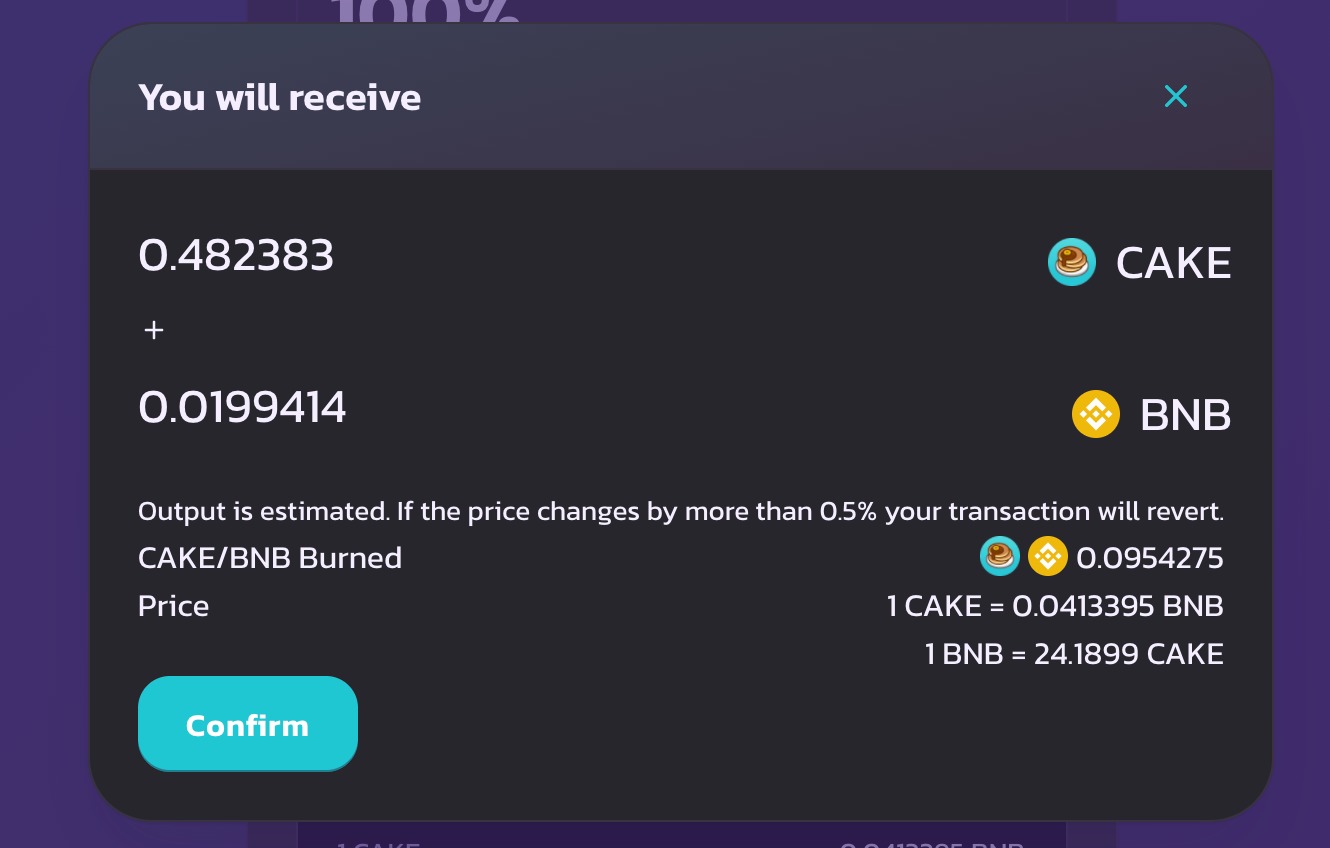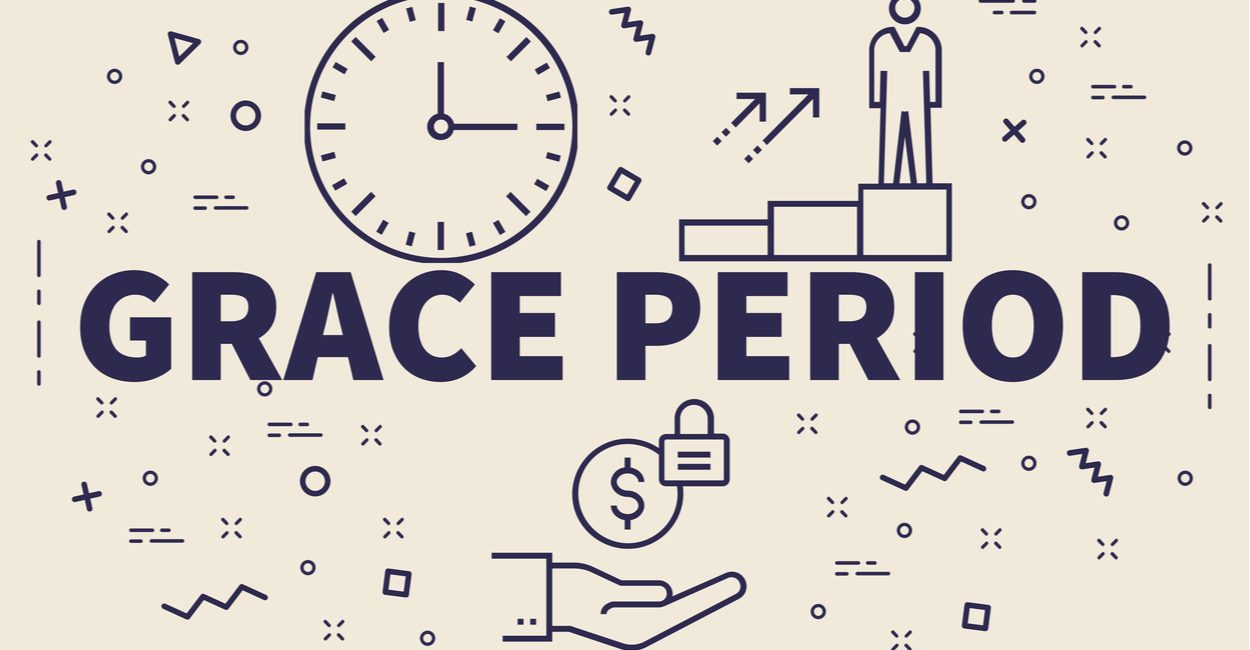Home>Finance>How Does Health Insurance Work When Switching Jobs?


Finance
How Does Health Insurance Work When Switching Jobs?
Published: November 8, 2023
Learn how health insurance works when switching jobs and how it impacts your finances. Explore key considerations and options to ensure seamless coverage transition.
(Many of the links in this article redirect to a specific reviewed product. Your purchase of these products through affiliate links helps to generate commission for LiveWell, at no extra cost. Learn more)
Table of Contents
Introduction
Switching jobs can be an exciting and daunting experience. As you prepare for a new chapter in your career, one crucial aspect to consider is how your health insurance coverage will be affected. Understanding how health insurance works when switching jobs is essential to ensure that you have the necessary coverage and avoid any gaps in protection.
Health insurance provides financial protection against medical expenses, helping individuals and families afford healthcare services and treatments. Typically, many people receive health insurance coverage through their employer-sponsored plans. These plans offer a range of benefits and options, providing individuals and their dependents with access to medical care.
When you switch jobs, your health insurance coverage may undergo changes. This could mean transitioning from one employer-sponsored plan to another, exploring alternative options such as marketplace plans, or dealing with gaps in coverage during the transition period. Understanding the process and your options can help mitigate any potential disruptions in your healthcare coverage.
Throughout this article, we will guide you through the process of how health insurance works when switching jobs. We will explain the initial coverage under employer-sponsored insurance, the notification and enrollment process, the implications of COBRA coverage, the alternative of marketplace plans, and the concept of special enrollment periods. We will also highlight some important considerations to keep in mind when switching jobs and how to navigate this transition smoothly.
Switching jobs should not leave you without health insurance coverage. By understanding the options available to you and knowing how to navigate the process, you can ensure that you and your loved ones have the necessary healthcare coverage during this transition. So let’s delve into the details of how health insurance works when switching jobs and empower you to make informed decisions about your healthcare coverage.
Understanding Health Insurance
Before delving into how health insurance works when switching jobs, it’s important to have a solid understanding of health insurance itself. Health insurance is a contract between an individual and an insurance company or provider that helps cover the costs of medical expenses.
Health insurance plans typically involve the insured paying a monthly premium in exchange for benefits that can help offset the cost of medical treatments, hospital stays, prescription medications, and preventive care. These plans may also have annual deductibles, which are the amounts individuals must pay out-of-pocket before the insurance coverage kicks in.
One key feature of health insurance is the network of healthcare providers. Insurance companies often have a network of doctors, hospitals, and other healthcare professionals that have agreed to provide care at discounted rates for the insurance plan’s members. When seeking medical treatment, individuals are encouraged to use providers within the network to maximize their insurance coverage. However, some plans also offer out-of-network coverage, though at a higher cost to the insured.
Health insurance plans can vary widely in terms of coverage levels, cost-sharing requirements, and the scope of services covered. It’s essential to carefully review the terms and conditions of your specific insurance plan to understand the benefits and limitations provided.
Now that we have a basic understanding of health insurance, let’s explore how this coverage works when switching jobs and what steps you need to take to ensure continuous coverage during this transitional period.
Initial Coverage under Employer-Sponsored Insurance
When you start a new job, your employer may offer health insurance coverage as part of your employee benefits package. This is known as employer-sponsored insurance (ESI). ESI is a common form of health insurance coverage, with many employers contributing a portion of the premium costs on behalf of their employees.
Typically, when you join a new job, there is an initial waiting period before you become eligible for health insurance. This waiting period can vary depending on the employer but is often around 90 days. During this waiting period, you may not have health insurance coverage provided by the employer.
Once the waiting period is over, you will have the opportunity to enroll in the employer-sponsored health insurance plan. Your employer will provide you with the necessary information and enrollment forms to complete. It is crucial to understand the enrollment timeline and any deadlines set by your employer to ensure you do not miss out on coverage.
Employer-sponsored insurance plans typically have open enrollment periods, during which you can make changes to your coverage or enroll as a new employee. These open enrollment periods are usually held once a year and give you the opportunity to review your coverage options, make adjustments to your plan, add dependents, or switch plans if necessary.
During the initial enrollment process, you will have the opportunity to select the health insurance plan that best suits your needs and the needs of your dependents, if applicable. The employer will provide details on the available plans, including coverage levels, cost-sharing requirements, and the premium amounts. It’s important to carefully review this information and consider factors such as deductibles, copayments, and network providers to ensure the chosen plan aligns with your healthcare needs and budget.
Once you have enrolled in the employer-sponsored health insurance plan, you and your eligible dependents will receive coverage. Your employer will deduct the premium costs from your paycheck, and you will have access to the benefits outlined in the plan.
Now that you understand the initial coverage process under employer-sponsored insurance, let’s explore the notification and enrollment process when switching jobs to ensure a seamless transition of health insurance coverage.
Notification and Enrollment Process
When you decide to switch jobs, it is essential to understand the notification and enrollment process for health insurance coverage. Notifying your current employer of your intention to leave and coordinating with your new employer regarding health insurance coverage are vital steps to ensure a smooth transition.
First, it’s important to review your current employer’s policies regarding resignation and the continuation of health insurance coverage. Many employers require employees to provide written notice of their intention to leave, typically two weeks or more in advance. This gives your employer time to process your resignation and make necessary adjustments to your benefits.
During the resignation process, it is advisable to inquire about the continuation of health insurance coverage through a program called COBRA (Consolidated Omnibus Budget Reconciliation Act). COBRA allows you to temporarily continue the health insurance coverage you had with your current employer, but you will be responsible for the entire premium cost, including the portion previously covered by your employer.
If you decide to enroll in COBRA coverage, you will need to complete the necessary paperwork and submit it within a specified timeframe, usually within 60 days of leaving your job. It’s important to note that COBRA coverage can be expensive, so it is essential to evaluate the cost and assess whether it is the most suitable option for your situation.
On the other hand, when you have secured a new job, you will need to coordinate with your new employer regarding health insurance coverage. Employers typically have a probationary period for new employees, during which you may not be eligible for health insurance benefits. However, once this period is over, you will have the opportunity to enroll in the employer-sponsored health insurance plan.
To ensure a seamless enrollment process, communicate with your new employer’s HR department or benefits administrator to understand the enrollment timeline and requirements. They will provide you with the necessary information and forms to complete the enrollment process.
During the enrollment process, carefully review the available health insurance plans and their respective benefits, premiums, deductibles, and networks. Evaluate your healthcare needs and the needs of your dependents, if applicable, to select the most suitable plan for your situation.
Be mindful of any enrollment deadlines and ensure you submit your enrollment forms within the specified timeframe. This will ensure that you have health insurance coverage starting from your employment start date without any gaps or delays.
By understanding the notification and enrollment process and promptly communicating with both your current and new employers, you can smoothly transition your health insurance coverage when switching jobs.
COBRA Coverage and its Implications
COBRA, or the Consolidated Omnibus Budget Reconciliation Act, is a federal law that allows individuals to continue their health insurance coverage after leaving a job, typically for a limited period of time. It is designed to provide temporary coverage and bridge the gap between employer-sponsored plans.
When you leave a job and qualify for COBRA coverage, you have the option to continue the exact same health insurance plan you had while employed. This can be particularly beneficial if you are in the middle of ongoing medical treatments or if you have pre-existing conditions that require continuous care.
COBRA coverage comes with certain implications that you need to consider:
- Cost: While employed, your employer often covers a portion of your health insurance premiums. However, when you opt for COBRA coverage, you become responsible for paying the entire premium, including the portion previously paid by your employer. This can result in significantly higher premiums, so it’s important to budget accordingly.
- Duration: COBRA coverage is typically available for a limited period of time, usually up to 18 or 36 months, depending on the circumstances. It’s important to understand the specific duration and plan ahead for transitioning to alternative coverage options once COBRA coverage ends.
- Eligibility: To be eligible for COBRA coverage, you must meet certain criteria. This includes being enrolled in your employer’s health insurance plan at the time of leaving the job, a qualifying event such as termination or reduction in hours, and not being eligible for other group health coverage.
- Notification: When you become eligible for COBRA coverage, your former employer is required to provide you with information on the continuation of coverage, including rights, benefits, and deadlines. It’s crucial to carefully review this information and submit your COBRA election forms within the specified timeframe.
While COBRA coverage can serve as a temporary solution, it’s important to explore other long-term options for health insurance coverage. The cost of COBRA can be prohibitive for many individuals, especially those who are unemployed or faced with financial challenges.
During your job transition, it is advisable to explore alternatives, such as marketplace plans. These plans, available through the Health Insurance Marketplace, can provide comprehensive coverage at more affordable rates, and you may be eligible for subsidies based on your income and family size.
Understanding the implications of COBRA coverage and exploring alternative options can help you make an informed decision about your health insurance coverage when transitioning between jobs.
Marketplace Plans as an Alternative
When switching jobs, it’s crucial to explore alternative health insurance options if continuing with COBRA coverage is not feasible or financially viable. One such alternative is enrolling in a health insurance plan through the Marketplace.
The Marketplace, also known as the Health Insurance Marketplace or the Exchange, is a platform created by the Affordable Care Act (ACA) where individuals and families can shop for and enroll in health insurance plans. These plans are offered by private insurance companies but must meet certain ACA requirements to ensure comprehensive coverage.
Here are some key points to consider about Marketplace plans:
- Choice and Affordability: The Marketplace offers a variety of health insurance plans from different providers, giving you the flexibility to choose a plan that fits your needs and budget. The plans are categorized into different metal tiers (Bronze, Silver, Gold, and Platinum), based on the level of coverage and cost-sharing.
- Subsidies: Depending on your income and family size, you may be eligible for financial assistance in the form of premium tax credits or subsidies, which can significantly lower the cost of health insurance premiums. These subsidies are designed to make coverage more affordable for individuals and families who qualify.
- Open Enrollment Periods: The Marketplace has specific open enrollment periods during which individuals can enroll in or make changes to their health insurance plans. Outside of these enrollment periods, you may only be able to enroll or make changes if you qualify for a special enrollment period (such as losing existing coverage or having a life event like getting married or having a child).
- Comprehensive Coverage: Marketplace plans must adhere to ACA requirements, which ensure coverage for essential health benefits, including preventive care, hospitalization, prescription medications, maternity care, and mental health services. This comprehensive coverage can provide you with peace of mind in terms of healthcare access and financial protection.
When considering Marketplace plans, it’s important to research and compare different options based on your specific needs. Consider factors such as the monthly premium, deductible, copayments, and network of healthcare providers to make an informed decision.
It’s also worth noting that if you lose your job-based coverage, you may qualify for a special enrollment period in the Marketplace, allowing you to enroll in a plan outside of the usual open enrollment period.
By exploring Marketplace plans as an alternative to COBRA coverage, you can potentially find a more affordable and comprehensive health insurance option that suits your needs during the job transition.
Special Enrollment Periods
Special Enrollment Periods (SEPs) are specific timeframes outside of the regular open enrollment period when individuals may be eligible to sign up for health insurance coverage or make changes to their existing coverage. SEPs are designed to accommodate certain qualifying life events or circumstances that may impact an individual’s healthcare needs.
Here are some examples of qualifying events that may trigger a Special Enrollment Period:
- Job Loss: Losing job-based health coverage, including due to termination or reduction in hours, may qualify you for a SEP. This allows you to seek new health insurance coverage outside of the usual open enrollment period.
- Marriage or Divorce: Getting married or divorced can be a qualifying event for a SEP. This allows you to enroll in a new health insurance plan or make changes to your existing coverage to reflect your new marital status.
- Birth or Adoption: When you have a new child through birth or adoption, you may be eligible for a SEP. This allows you to add your child to your health insurance plan or make changes to your coverage to include dependents.
- Relocation: Moving to a new area may trigger a SEP, as it can impact the availability of healthcare networks and insurance plans. This allows you to find new coverage that aligns with your new location.
- Loss of Other Coverage: Losing coverage from sources such as Medicaid, the Children’s Health Insurance Program (CHIP), or aging off a parent’s plan can qualify you for a SEP. This ensures that you have continuous health insurance coverage.
It’s important to note that each qualifying event has specific rules and criteria for eligibility. You must act promptly and enroll within the specified timeframe following the event to take advantage of the SEP.
When experiencing a qualifying event, you will need to provide documentation to confirm your eligibility for the SEP. This may include proof of job loss, marriage or divorce certificates, birth certificates, or other relevant documents.
Understanding the availability of Special Enrollment Periods can be crucial when transitioning jobs or experiencing other life events. It provides reassurance that you have the opportunity to enroll in health insurance coverage or make changes to your existing coverage when you need it most.
It’s always advisable to contact the Health Insurance Marketplace or a licensed insurance agent to confirm your eligibility for a Special Enrollment Period and get guidance on the enrollment process.
Considerations when Switching Jobs
Switching jobs not only impacts your career but also has implications for your health insurance coverage. It’s essential to consider the following factors to ensure a smooth transition and maintain continuous healthcare protection:
- Review Your Current Coverage: Before leaving your current job, thoroughly review your existing health insurance coverage. Understand the benefits, network providers, and any pending medical treatments or prescriptions. This will help you determine what type of coverage you will need when switching jobs.
- Notification and Timing: Give your current employer proper notice of your intention to leave and understand the timeline for your health insurance coverage to end. This will help you plan and explore alternative coverage options without any gaps in protection.
- Consider COBRA Coverage: Evaluate the possibility of continuing your current health insurance through COBRA. While it may come at a higher cost, it can provide temporary coverage until you secure new insurance or during a transitional period.
- Explore Marketplace Plans: Research and compare health insurance plans available through the Marketplace. Consider factors such as premiums, deductibles, and network providers to find a plan that meets your healthcare needs and budget. If you qualify for subsidies, it can make coverage more affordable.
- Special Enrollment Periods: Understand the circumstances that may allow you to qualify for a Special Enrollment Period. If you experience a qualifying event, such as job loss or marriage, you may have the opportunity to enroll in new health insurance coverage or make changes to your existing plan outside the regular open enrollment period.
- Budget for Health Insurance Costs: Consider the financial implications of health insurance premiums when switching jobs. If your new employer offers health insurance, determine the cost of coverage and any changes in premium contributions or deductibles. Factor this into your overall financial planning.
- Research Network Providers: If your new job offers health insurance, review the network of healthcare providers covered by the plan. Ensure that your preferred doctors, specialists, and hospitals are included to maintain continuity of care.
- Family Coverage: If you have dependents, consider their healthcare needs when switching jobs. Evaluate the coverage options and costs for adding your family members to the new health insurance plan or exploring separate coverage if needed.
By considering these factors when switching jobs, you can make informed decisions about your health insurance coverage, avoid gaps in protection, and ensure that your healthcare needs are well-taken care of.
Conclusion
Switching jobs is an exciting and sometimes challenging time in our lives. However, it’s important not to overlook the impact that this transition can have on our health insurance coverage. Understanding how health insurance works when switching jobs is crucial to ensure continuous access to healthcare services and financial protection.
Throughout this article, we have explored various aspects of health insurance when changing jobs. We discussed the initial coverage under employer-sponsored insurance, the notification and enrollment process, the implications of COBRA coverage, the alternative of Marketplace plans, the concept of Special Enrollment Periods, and crucial considerations to keep in mind during this transition.
When switching jobs, it’s essential to review your current health insurance coverage, notify your employer, and explore options such as COBRA or Marketplace plans. Understanding the timing and enrollment process can help you maintain continuity of coverage without any gaps. Additionally, being aware of Special Enrollment Periods and qualifying events can provide opportunities to enroll in or change health insurance plans outside of open enrollment periods.
Take the time to research and compare different health insurance options to find a plan that aligns with your healthcare needs and budget. Explore factors such as premiums, deductibles, network providers, and potential subsidies or financial assistance to make an informed decision.
Remember, your health and well-being are important. By being proactive and understanding how health insurance works when switching jobs, you can ensure that you and your loved ones have the necessary coverage to protect against unexpected medical expenses.
As you embark on this new chapter in your career, don’t forget to prioritize your health and make informed decisions about your health insurance coverage. With the right knowledge and preparation, you can navigate the job transition smoothly while safeguarding your healthcare needs.














